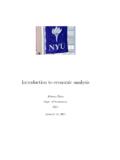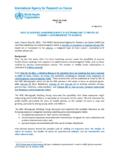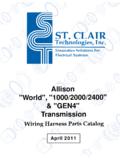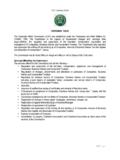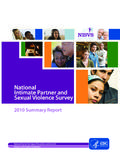Transcription of AS2870-2011 and the Australian Geomechanics …
1 AS2870- 2011 and the Australian Geomechanics society 's landslide Risk Management Guidelines 1 2. B. L. Hargreaves (Geology), RP Geo and P Kidd BAppSc 1. Auswide Geotechnical, PO Box 4044, Eight Mile Plains Qld, PH 617 3343 5092 FAX 617 3343 7655 email 2. SMEC, PO Box 953 Nerang, Qld 4211, PH 617 5578 0200, FAX 617 5578 0203, email 1. ABSTRACT. Since its advent in 1986, AS2870 has always referred any landslip issues to the Australian Geomechanics society 's (AGS) guidelines, however many practitioners have little experience in landslide Risk Management (LRM). This paper presents some guidelines for the AS2870. practitioners on when a LRM assessment is required, as well as presenting an alternative method to the current AGS guidelines to assess landslide susceptibility. Keywords: landslide , Risk, AGS, LRM, AS2870. 2. INTRODUCTION. AS 2870, in its various forms from 1986 to 2011 has always required a site with a landslide risk potential to be classified as Class P, but has never provided any specific advice on recognizing this landslide risk potential, other than in its referenced document the Australian Geomechanics society 's guidelines for landslide Risk Management (LRM), initially known as AGS 1985, then AGS.
2 2000, now AGS 2007. Many AS 2870 site classifiers do not have either the knowledge or experience to carry out a landslide Risk Assessment and in a significant number of cases, would not be able to visually identify a landslide risk indicator onsite. Some use a disclaimer similar to This site classification report has not considered the landslip risk potential of this site . Unfortunately, stakeholders can misinterpret this being that the site has no landslip potential. This paper is intended to give all AS2870 practitioners enough information to at least suspect when a site has a landslide potential that must be brought to the attention of all stakeholders so that a suitably experienced geotechnical engineer can be engaged to make a landslide risk assessment of the site. The AGS 2007 LRM guideline is a broad-brush document, theoretically covering large infrastructures such as dams, railways and highways down to 400m2 housing allotments. This paper provides an alternative, specific methodology for those classifying housing allotments.
3 Many local government agencies are not only aware of the landslide risk potential in their area; they have commissioned their own landslide hazard assessments. Most of the maps are in the public domain or are available upon request. The list below is of known local government areas with these maps (but is not exhaustive): Victoria - Yarra Ranges, Colac-Otways, Surf Coast, Mornington Peninsula Tasmania Mineral Resources Tasmania (MRT) has a landslide map series at 1:25,000. covering the following areas Hobart, Launceston, Ulverstone, Wynyard, Glenorchy, Devonport, Burnie. NSW Wollongong City Council and nearby surrounds, Pittwater, Ryde, Baulkham Hills, Gosford, Lismore, Ballina, Shoalhaven. QLD Beechmont, Brisbane, Canungra, Numinbah, Capalaba, Darra, Enoggera, Mapleton, Maleny, Mt Gravatt, Mt Mee, Petrie, Rosewood, Marburg, Sandgate, Springbrook, Tamborine Mountain, Toowoomba, Wynnum, Gatton, Lockyer Valley, Currumbin, Cairns, Redcliffe, Scenic Rim, Whitsundays, Townsville.
4 3. LANDSLIDES AND THEIR IDENTIFICATION. The USA Geological Survey Fact Sheet 2004-3072 (July 2004), also reproduced in AGS 2007, shows graphically the ten most common types of landslip events. The AS2870 practitioner does not need to fully understand the geotechnical mechanisms generating these different landslide events, but should be able to recognise them. Both the AS2870 practitioner and the geotechnical engineer must be aware that two or more landside events can have the potential to adversely affect the same site. an allotment affected by creep may also be down slope from a rock escarpment, where a rock fall may be a possibility. Most Australians are aware of the 1997 Thredbo landslide , which was almost an instantaneous catastrophic event, but what is not widely recognised is the fact that the majority of landslide events are slow, and might only involve 10 mm of ground movement per rainfall event, with the events at 5. year or more intervals. 10 mm of ground movement over 5 years can cause unsightly and expensive damage, but 40 mm over 20 years could cause the need for demolition of a structure (with the design life of a structure in Australia being 50 years).
5 The simplistic definition of a landside is The down slope movement of soil and/or rock under the forces of gravity which may alter stability of an existing slope and/or cause damage (or the potential to cause damage) to structures and/or infrastructure within the zone of influence of the landslide event. A landslide event does not include fretting and erosion generated on a slope during rains, unless it causes or has the potential to cause damage or alter the stability of the slope as defined above.. 4. IDENTIFYING THE POTENTIAL FOR landslide . Table 1 is a tick and flick list that should be used on all building allotments, regardless of the slope (even flat sites can be included). Table 1. Question Score rate Score Yes = 5. 1 Is the site within an area covered by a landslide map? No = 1. Don't Know = 10. If in a known mapped area, what is the zone applicable to Very Low/Low = 1. 2 Moderate = 5. this site? High/Very High = 10. Are any of the features shown on the USGS fact sheet of Yes = 5.
6 3 No = 1. this paper within 200m of the proposed building footprint? Don't Know = 10. If features shown on the USGS fact sheet exist, would you Minor = 5. 4 Significant = 7. describe the features' effect on the landscape as;. Major = 10. TOTAL. It is the opinion of the authors that if the total score from Table 1 is 10 or more, then according to AS2870- 2011 Section , this site must be classified as Class P ( landslide risk) and if the AS2870. practitioner is not a suitably experienced geotechnical engineer, the recommendations of the site classification report should be similar to: This site may have the potential to be adversely impacted on by a landslide event at some time during its life expectancy, therefore a detailed slope stability investigation must be commissioned and carried out by a geotechnical engineer experienced in landslide Risk Management.. This type of recommendation is also consistent with Clause of AS2870- 2011 . 5. QUALIFICATIONS OF LANDSIDE RISK ASSESSORS.
7 Through the various governmental agencies (local, state and federal) there is little consensus on this issue and the requirements can change across local, state and federal boundaries. It is the authors' opinion that there should be some consistency and that only three broad categories of practitioners are suitable, with all of these having at least five years post-university experience and mentoring in the geotechnical field with specific experience in slope stability assessment and with a sound knowledge of domestic and low-rise construction. Consultants who may have significant experience in landslides, but little or no domestic or low-rise construction experience, may be unsuitable when it comes to recommending economical modifications to the construction programme to negate or minimise the potential effects of a landslide event on a residential allotment. Graduates in Geotechnical Engineering The only undergraduate degree known in the discipline is offered at the University of Tasmania.
8 RMIT used to offer Geological Engineering, but it is no longer offered. All the other courses specifically in Geotechnical Engineering in Australia are post-grad, therefore most geotechnical graduates are overseas trained and would need to be NPER-3 approved, as well as being mentored in slope stability for a minimum of five years and have knowledge of domestic construction. Graduates in Civil/Structural Engineering These would form the majority of practitioners, but to be considered suitable (besides being NPER-3 approved) would need to have been mentored in a geotechnical engineering practice specialising in slope stability assessment under supervision of a recognised practitioner for a minimum of five years and have a knowledge of domestic construction. They should have also completed at least one of the following short courses: A course similar to the UNSW's Short Course in Landslip Risk Management . A Geology for Engineers course as periodically advertised in the AGS Journal RTA Slope Risk Assessment Course Geology Graduates They would need to be approved as RP Geo by the Australian Institutes of Geoscientists and would need to have been mentored for a minimum of five years in a geotechnical engineering practice specialising in slope stability assessment under supervision of a recognised practitioner and completed at least one of the above short courses.
9 There may be other suitably experienced practitioners, but their qualifications and experience would need to be considered on a case-by-case basis. At the time of writing, it is generally accepted that Professional Indemnity Insurance cover of $2M is the minimum requirement for practitioners working on domestic landslide reports. 6. A landslide HAZARD ASSESSMENT SYSTEM FOR DOMESTIC ALLOTMENTS. This method had its origins in the 1999 SMEC report to the Gold Coast City Council (Qld) entitled Gold Coast City Council Slope Stability Study Contract 7001991029. Sadegh-Vaziri and Taylor further refined the principles of this SMEC 1999 report in their 2002 paper entitled Implementation of landslide Risk Management on the City of the Gold Coast. Sadegh-Vaziri and Taylor's work was further updated by Patrick Kidd in his 2011 paper entitled Updating the landslide Hazard Assessment System within the City of the Gold Coast.. The Sadegh-Vaziri and Taylor and Kidd's papers produced what many peer professionals believe to be suitable methodology to investigate areas down to 25m2, rather than the large scale areas of the AGS 2007 guidelines, and at the time of writing as resulted in thousands of allotments being assessed on the Gold Coast over the past ten years.
10 This paper is intended to extend the validity of this work Australia-wide and provide the following: Consistency between practitioners (as opposed to the subjective outcomes of the AGS 2007. methodology). Site-specific assessment for smaller allotments Consistent construction guidelines Final plain-language classification, which can be understood by all stakeholders. 7. ANALYSING THE landslide RISK POTENTIAL OF A SMALL ALLOTMENT (<1 HECTARE). All practitioners using this methodology must have a full understanding of the referenced papers by Sadegh-Vaziri and Taylor (2001) and Kidd ( 2011 ). One of the critical factors of adopting one method developed in a specific area to another area with respect to slope stability is rainfall. All practitioners should be aware of the rainfall history of the area in which they work. Records are free from the Bureau of Meteorology (BOM) webpage. Providing that the rainfall records do not show periodic rainfall exceeding that of the Gold Coast, it is the authors' opinion that this method can be used with confidence anywhere.
